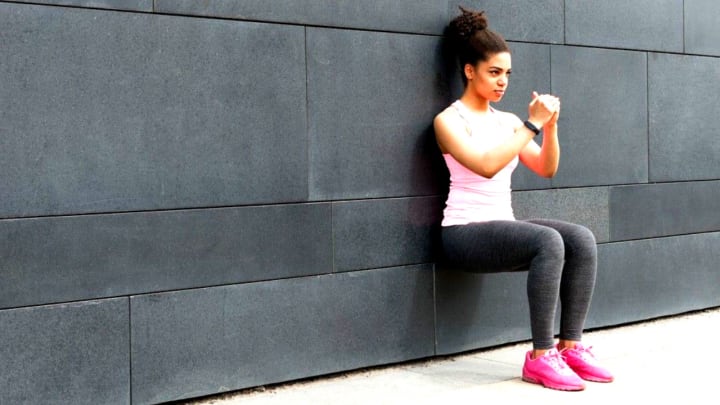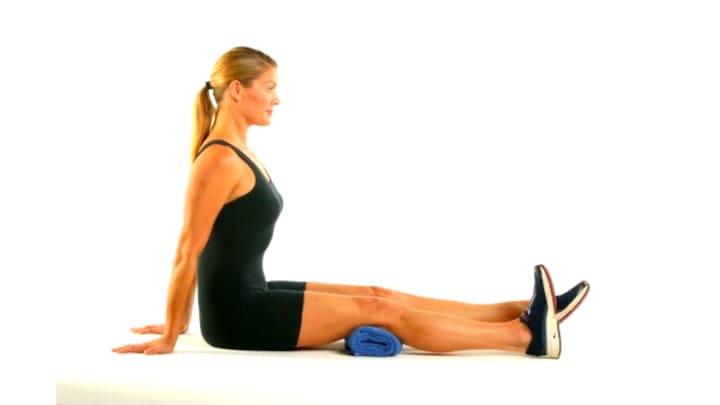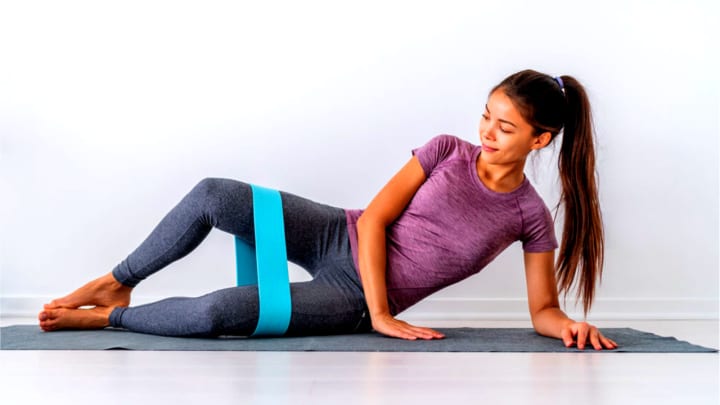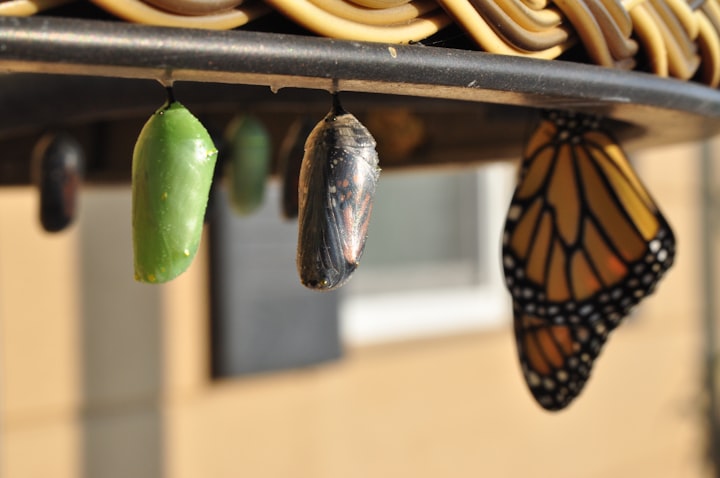Got a Loose Kneecap? Try These 7 Exercises for Patellar Tracking, Subluxation & Dislocation
Prevent getting loose kneecap

Got a loose kneecap? You're not alone. According to the American Academy of Orthopaedic Surgeons, patellar instability is a common knee injury, particularly among young athletes. The good news is that there are a number of exercises you can do to help stabilize your kneecap and prevent further injury.
Most people are familiar with the knee joint and its main components: the femur (thighbone), patella (kneecap), and tibia (shinbone). However, there is another important structure that helps to keep the knee stable: the patellar ligament. This ligament can sometimes become stretched or damaged, resulting in a condition called patellar tracking disorder. This can lead to pain, instability, and even dislocation of the kneecap.
Fortunately, there are several movements that can help to improve patellar tracking and prevent further injury. If you have a patellar tracking disorder, be sure to consult with a doctor or physical therapist before beginning any new exercise routine.
Patellar tracking exercises are designed to improve the way in which the patella tracks through the knee joint. These exercises can help to reduce pain and improve the range of motion in the knee joint. Are you ready to create a self-care routine for your knee? Make yourself a cup of tea and let’s begin to learn awesome movement sequences!
What Is a Patellar Tracking, Subluxation, & Dislocation?
The kneecap, or patella, is a small bone that sits in front of the knee joint. The patella is connected to the femur (thighbone) by the quadriceps tendon. It is held in place by the patellar ligament, which attaches it to the tibia (shinbone). The patella acts as a pulley for the quadriceps muscles, which helps to extend the leg. The patella also helps to protect the knee joint from damage.
Patellar tracking refers to the way in which the patella moves as the knee joint is flexed and extended. If the patella does not track correctly, it can cause pain and irritation in the knee joint. This condition is known as patellar subluxation or dislocation.
Subluxation is when your kneecap (patella) sometimes pops out of place but goes back in on its own. Dislocation is when your kneecap pops out of place and doesn’t go back in by itself.
Patellar tracking occurs when the knee cap slides too far to the inside or outside during movement. This can happen due to injury, repetitive motions, or simply wear and tear on the knee joint.
7 Exercises for Patellar Tracking, Subluxation, & Dislocation
Tracking problems often lead to subluxation or dislocation. If you have patellar tracking, subluxation, or dislocation, you may need to see a doctor or orthopedic specialist for treatment.
Treatment may include physical therapy, bracing, steroid injections, or surgery. You can also try our favorite seven exercises at home to help improve patellar tracking. Are you ready to learn them? Let’s get comfy and begin.
1. Wall Sits
If you're looking for a way to improve your patellar tracking, give wall sits a try. You might just be surprised at how well they work.

1. Sit with your back against a wall and your feet about hip-width apart.
2. Slowly slide down the wall until your knees are bent at a 90-degree angle.
3. Hold this position for 30 seconds to one minute.
4. Repeat three to five times.
2. Heel Raises
Heel raises are one of the most effective for taking care of a loose kneecap. By strengthening the muscles around your kneecap, heel raises help to stabilize the joint and prevent the patella from slipping out of place. As an added bonus, they also help to improve your range of motion and reduce pain.
Just follow these simple steps:
1. Stand with your feet hip-width apart and your knees bent.
2. Raise your heels so you're standing on your toes.
3. Hold for a few seconds, then lower back down.
4. Repeat 10-15 times.
Do this exercise a few times a week and you'll see a noticeable difference in your patellar tracking. Your kneecaps will thank you!
3. Quad Sets
Quad sets are one of the most effective exercises for improving patellar tracking, according to a new study. Quad sets can help to reduce the patellar subluxation, a condition where the kneecap slips out of place.

Quad sets are performed by contracting the quadriceps muscles while the knee is extended. The contraction helps to pull the kneecap back into place. Quad sets can be performed multiple times per day, and they should be done slowly and with control.
1. Simply contract your quadriceps (thigh muscles) and hold for 5-10 seconds.
2. Repeat 10-15 times.
Quad sets help to strengthen the muscles around the kneecap, which in turn helps to keep the patella in place. By performing these exercises on a regular basis, you can help improve your patellar tracking and reduce your risk of pain and joint instability.
Make sure to support yourself with knee braces that are designed to prevent further injuries while creating a cushion for your kneecap.
4. Straight Leg Raises
Here’s how to do straight leg raises to support your knee:
1. Lie on your back with your legs straight.
2. Slowly lift one leg about six inches off the ground, keeping your thigh muscle as relaxed as possible.
3. Hold for five seconds, then lower your leg back to the starting position.
4. Repeat 10 times with each leg.
As you get stronger, you can increase the height of your leg raise and the number of repetitions. If you're looking for more challenging variations of this exercise, try doing it with a resistance band or ankle weights.
You can also try doing raises with a bent knee. Give these exercises a try and see if you can get your kneecap tracking properly again!
5. Clam Shells
Subluxation of the patella, or kneecap, is a common knee injury that can occur when the quadriceps muscles contract too forcefully, causing the kneecap to track or slide off to the side.

This can lead to pain, inflammation, and weakness in the knee. To help prevent subluxation and improve patellar tracking, try the clamshell exercise.
1. Lie on your side with your knees bent and your feet together.
2. Lift your top knee up towards the sky while keeping your bottom leg stationary.
3. Hold for five seconds, then slowly lower your top leg back down to the starting position.
4. Repeat 10 times on each side.
Doing this exercise regularly can help to strengthen the muscles around the kneecap and prevent it from slipping out of place.
6. Bent Knee On Chair
Another exercise is to sit in a chair with your knees bent and your feet flat on the floor.
1. Slowly lift your affected leg off the floor.
2. Hold for 5 seconds.
3. Slowly lower your leg back to the starting position.
3. Repeat 10 times.
You should feel a gentle stretch in the front of your thigh. If you have any pain or discomfort, stop the exercise and consult your doctor. With regular practice, you can help keep your kneecap tracking properly.
7. Knee Extension
To do the knee extension exercise, sit in a chair with your feet flat on the ground.

1. Slowly straighten your leg, keeping your knee aligned with your ankle.
2. Hold for a count of 10.
3. Slowly lower your leg back to the starting position.
4. Repeat 10 times on each leg.
This exercise can be done seated or standing and involves simply extending the leg straight out in front of you and then returning to the starting position.
You can start with a small range of motion and gradually increase it as your strength improves.
How Often Should You Do These Exercises?
Patellar tracking, subluxation, and dislocation can be painful and may lead to longer-term damage if not corrected. Luckily, there are several exercises that can help to strengthen the muscles and ligaments around the knee, keeping the joint in proper alignment and reducing the risk of subluxation.
For best results, aim to do these exercises 3-5 times per week. And remember, if you feel any pain while doing these exercises, stop immediately and consult your doctor.
What Are Some Common Side Effects of Patellar Tracking Problems, and How Can You Avoid Them?
Exercise is key for maintaining strong muscles and bones, but did you know that it can also help keep your joints healthy? That's right - exercise helps to keep the tissues surrounding your joints lubricated and prevents the buildup of cartilage-degrading enzymes.
One of the most important joints in your body is the knee, and keeping the patella (kneecap) properly aligned is essential for preventing pain and disability.
Patellar tracking problems occur when the kneecap is not able to glide smoothly in its natural groove. This can be caused by a number of factors, including muscle imbalance, overuse, injury, or arthritis.
Common symptoms include knee pain, clicking or grinding sensations, and swelling. If left untreated, patellar tracking problems can lead to more serious conditions such as subluxation (partial dislocation) or complete dislocation of the kneecap.
Closing
Got a loose kneecap? It's not as uncommon as you might think. In fact, according to the American Academy of Orthopaedic Surgeons, as many as one in three people have a condition called patellar tracking disorder, which can cause the kneecap to slip out of place.
If you've ever been told you have a "loose kneecap," chances are you have a patellar subluxation. This occurs when the kneecap (patella) moves out of its normal position in the groove at the end of the femur (thighbone). This can happen due to injury, repetitive movements, or simply from wear and tear over time.
There are a number of exercises that can help to prevent or correct patellar tracking disorder, as well as other conditions like subluxation and dislocation. Fortunately, there are several exercises you can do to help improve patellar tracking. One such exercise is the wall sit.
To do this, simply stand with your back against a wall and slide down until your knees are bent at a 90-degree angle. Hold this position for 30 seconds to 1 minute, then release and repeat 2-3 times. Other exercises that can help improve patellar tracking include leg lifts, clam shells, heel raises, and knee extensions.
Don't let a loose kneecap create suffering in your life - head over to Plus Braces and pick up a stabilizing brace today! Patellar tracking exercises can help get things back in alignment with the support of knee braces. Plus, our experienced staff is here to help you find the perfect fit.
So don't wait - come see us today! With consistency and dedication, you can help improve your patellar tracking and reduce your risk of knee injuries in the future.






Comments
There are no comments for this story
Be the first to respond and start the conversation.